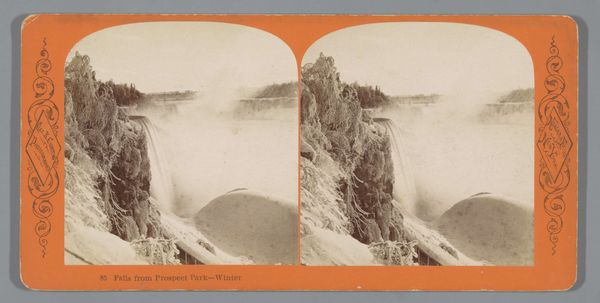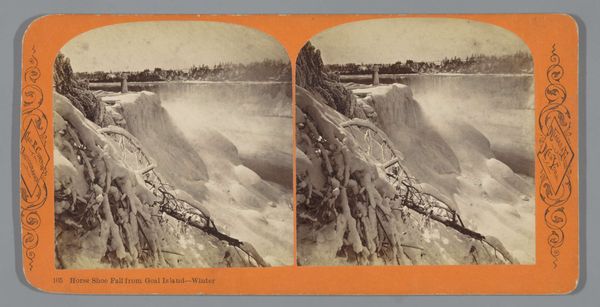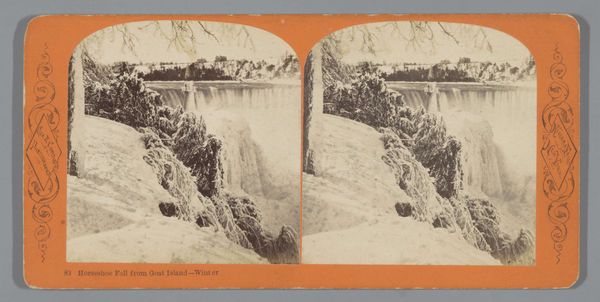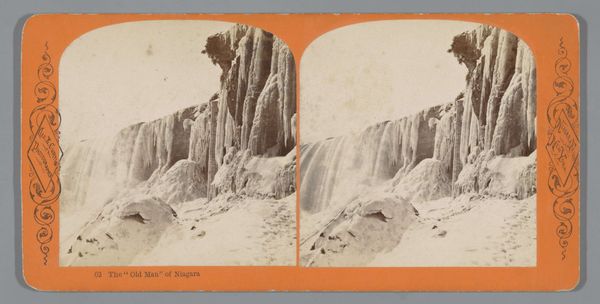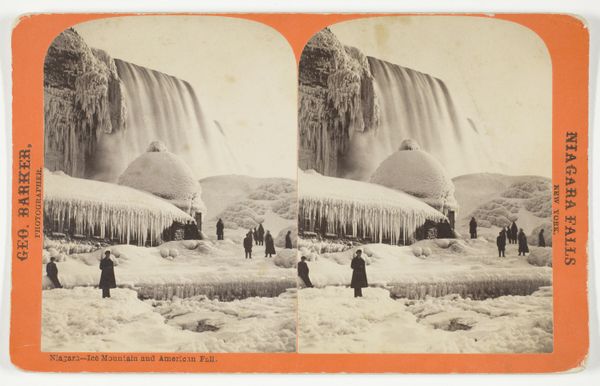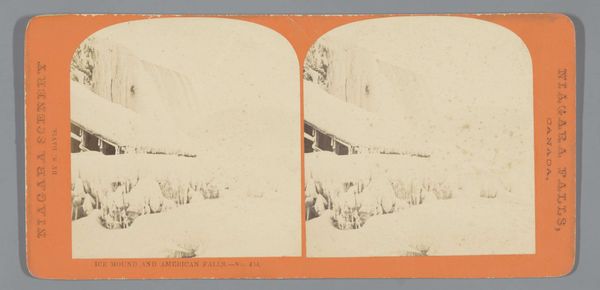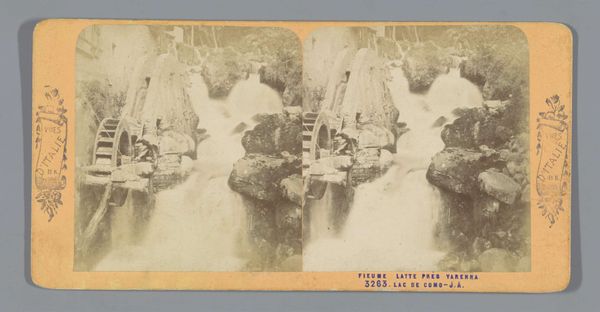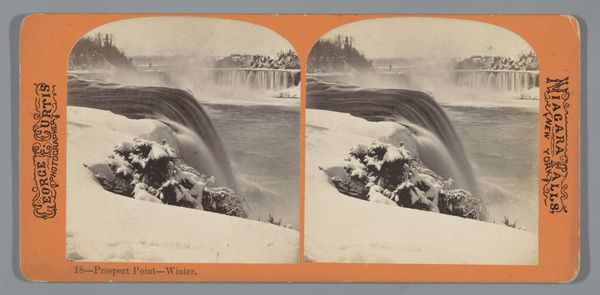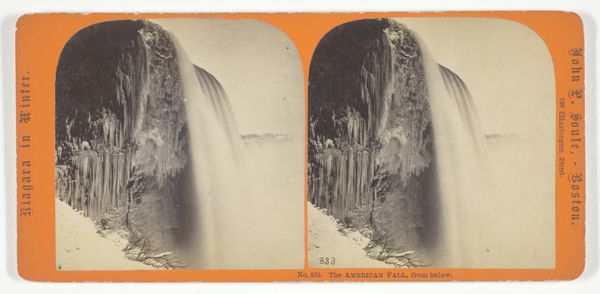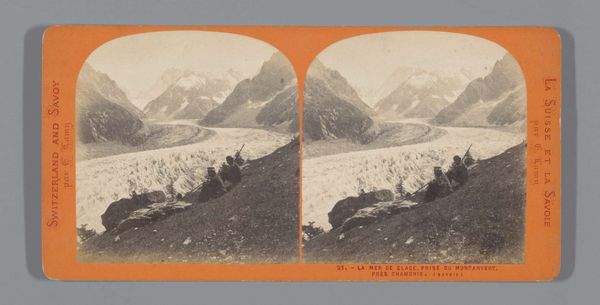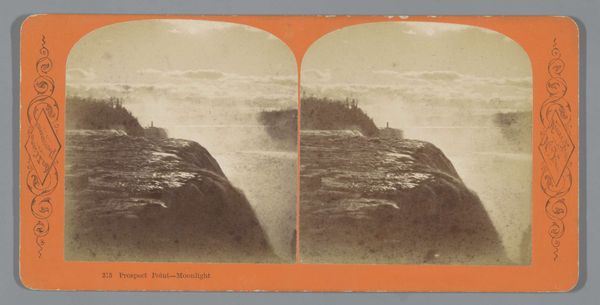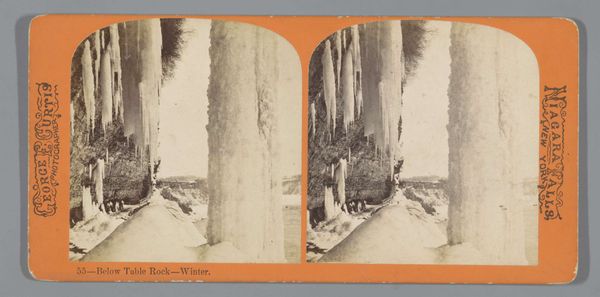
photography
#
landscape
#
waterfall
#
photography
#
watercolor
Dimensions: height 87 mm, width 176 mm
Copyright: Rijks Museum: Open Domain
Editor: So this photograph, “Horseshoe Falls in Winter” by A. Davis, likely taken sometime between 1868 and 1890, portrays a frozen Niagara Falls. It feels overwhelmingly still, almost like a landscape of the moon. What do you see in this piece that stands out, particularly regarding the symbolic language it might employ? Curator: The starkness itself is quite evocative. Consider that in the 19th century, Niagara Falls was a symbol of natural sublime power, the awe-inspiring force of nature untamed. Now, think about what winter adds to that imagery. It's a potent signifier. Editor: In what sense? Curator: Winter, particularly when it touches such a vibrant symbol as the Falls, often signifies themes of dormancy, or even the temporary triumph of cold, stillness, or death over life and movement. Look at those sharp, jagged ice formations. What do they tell you? Editor: That’s an interesting idea! I hadn't considered the stillness as a kind of symbolic statement. They look like frozen chaos; they tell a story of potential danger... they might convey that even mighty Niagara can be momentarily subdued. Curator: Precisely! There's a tension created by taking something iconic for its dynamism and presenting it frozen. This photograph doesn't just document a scene; it invites contemplation on the cyclical nature of power, the transience of even the most imposing forces. It's about memory and loss, and the cultural encoding of weather into these visual languages. What about the tiny figures atop the Falls – are they gods, or something else? Editor: Thinking about it, their relative smallness enhances the overall feeling of the Falls as almost otherworldly and monumental in scope, as nature subduing men’s’ footprint. Curator: Exactly. It becomes less about a literal depiction and more about the emotional weight of that visual, which is something Davis captured rather deftly. The whole tableau becomes charged with layered meanings about civilization and the elements. Editor: I’ll definitely consider those layers the next time I view landscape photography. Thank you.
Comments
No comments
Be the first to comment and join the conversation on the ultimate creative platform.
